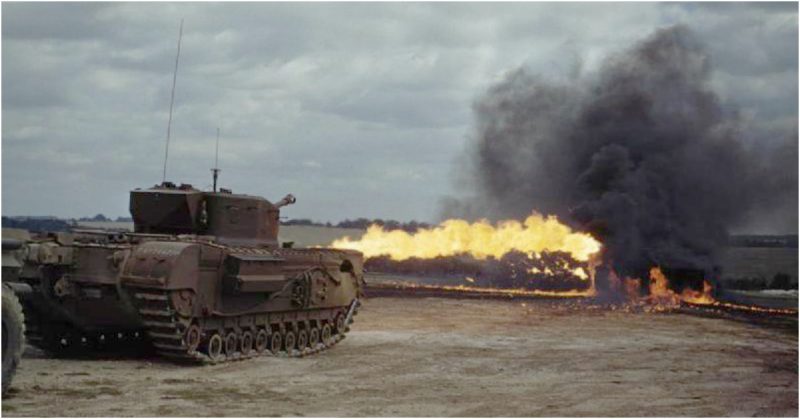The first attempts to add flamethrowers to US tanks were made in 1943 when M1A1 flamethrowers were added to M3 Lee medium tanks.
Fire has been used as a weapon of war for thousands of years. While the ancient Greeks and Chinese found ways to project streams of flame at their enemies, the concept of the flamethrower was really only widely used from the beginning of the 20th century.
Portable flamethrowers first saw widespread use in WWI, primarily by the Germans. But by the time WWII rolled around, flamethrowers had been paired with yet another potent weapon: the tank. One such mechanized flamethrower was the American E7-7.
While flamethrowers undoubtedly pack a heavy psychological punch against an enemy (who wouldn’t be terrified by a gout of flame heading towards them?), their usefulness and effectiveness on the battlefield were often questioned.
While early flamethrower attacks by German troops against British and French trenches in WWI were quite successful, the limitations of the flamethrower soon became obvious.
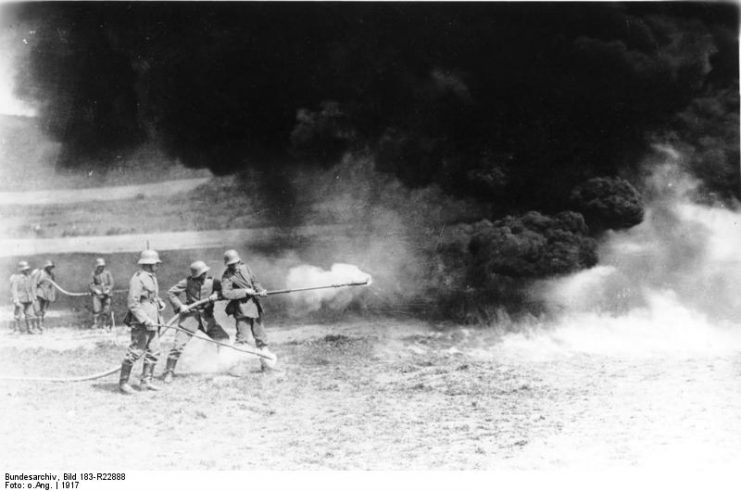
The range of the weapon was limited, and the user not only attracted enemy fire but also ran the risk of setting himself alight if the fuel tank caught fire and exploded.
So, if flamethrowers were so limited in terms of usefulness, why go to the trouble and expense of building a mechanized flamethrower? After all, weren’t tanks effective enough weapons without replacing their main guns with flamethrowers?
The answer to that is, like many specialized weapons, mechanized flamethrowers were very effective in certain places and when used for specific situations.
In the Pacific Theater of the Second World War, the Japanese installed a great many concrete bunkers on the islands they held. These bunkers often had walls up to two feet in thickness.
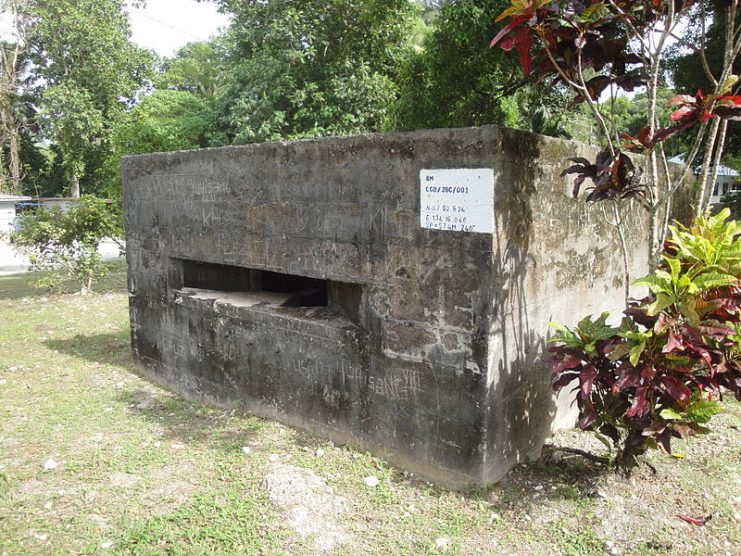
The Japanese bunkers were all but invulnerable not only to small arms fire but also to 37mm and 75mm tank guns. A group of Japanese soldiers manning one of these bunkers with a few machine guns made for a threat that was difficult to dislodge.
Flamethrowers, in these specific situations, were extremely useful. While neither American tanks nor small arms could easily clear out and neutralize one of these bunkers, a furious jet of flame directed through one of the openings could certainly do the job quite quickly.
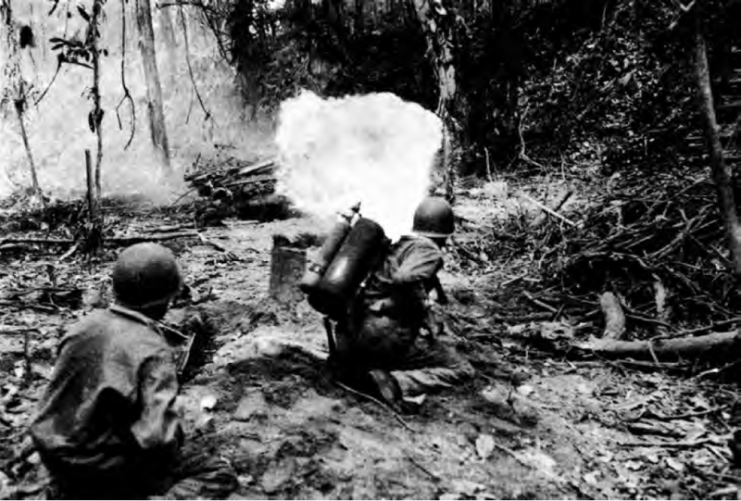
The problem was, of course, that getting a man with a flamethrower on his back close enough to a bunker to do this was nearly impossible – and this was where the concept of a mechanized flamethrower came in.
A tank could get the flamethrower close enough to a bunker to blast flame into it without spelling the end for the flamethrower user. Such a vehicle could provide excellent support to infantry who were attacking fortified bunkers and machine gun positions.
The first attempts to add flamethrowers to US tanks were made in 1943 when basic M1A1 flamethrowers were simply added to M3 Lee medium tanks.
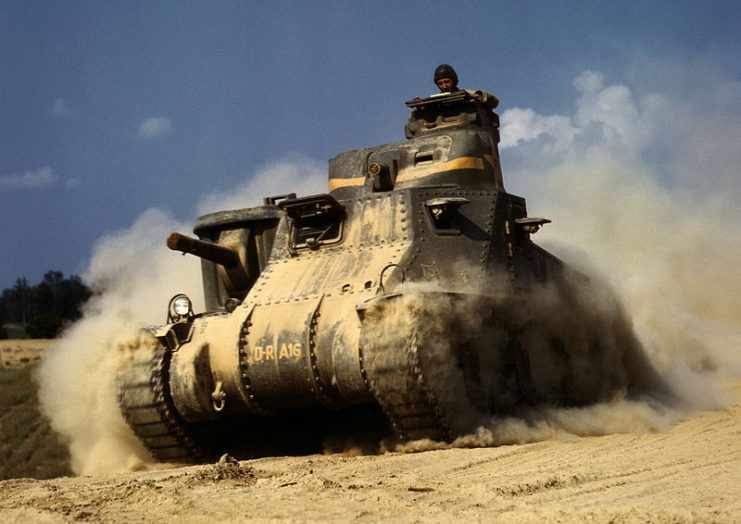
While the initial test involved firing the flamethrower through the pistol port, this proved to offer too limited a firing area. Consequently, the flamethrower was mounted where the bow machine gun would be.
After some limited success with these improvised flamethrower-enhanced tanks, it was decided that a more dedicated mechanized flamethrower should be developed.
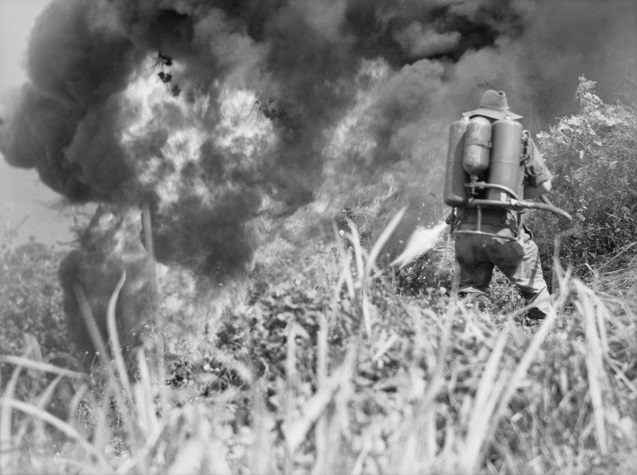
While some units continued to work on improvised modifications, development and ideas of a dedicated main armament flamethrower tank had actually already started in 1942. It was to be called the E7-7.
The vehicle which would form the basis of the E7-7 mechanized flamethrower was the M5A1 Stuart light tank. An improved version of the M5, the M5A1 was a quick and maneuverable tank which also offered decent protection. It would be ideal for converting into a mechanized flamethrower.
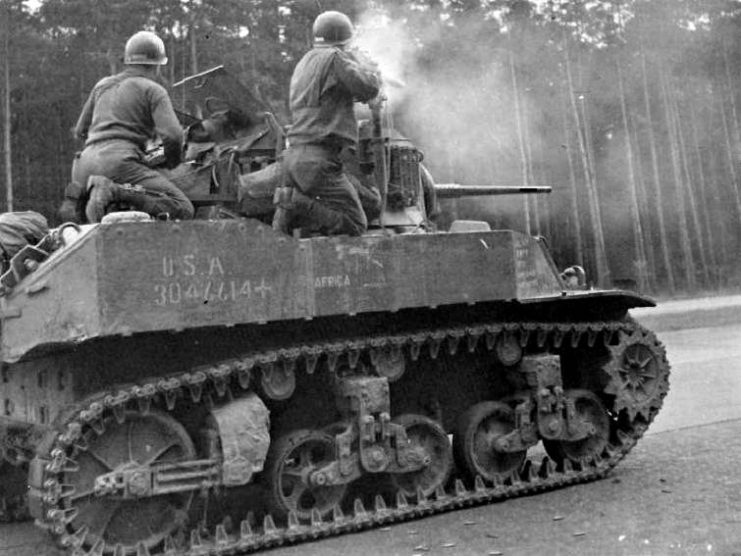
The National Defence Research Committee commissioned Standard Oil to design and produce a powerful flamethrower for main armament tank use. The resulting weapon combined the E7 flame gun and the E7 fuel tank assembly and was thus designated the E7-7.
The flame gun could shoot either standard fuel or fuel that had been thickened to a more gel-like viscosity with napalm. With the napalm-enhanced fuel, the range for a jet of flame was as far as 130 yards.
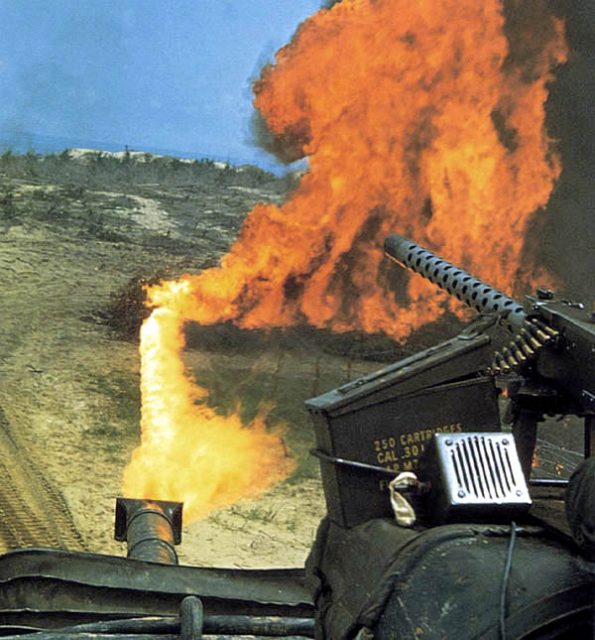
The E7 fuel tank held 105 US gallons of fuel – enough to power the E7 flame gun for quite a while. Also, unlike earlier improvised mechanized flamethrowers, the E7-7’s main armament was its flamethrower, mounted in the turret.
The flamethrower could be rotated a full 360 degrees, greatly increasing the effectiveness of the E7-7 on the battlefield. In addition, the E7-7 also had a coaxial Browning .30 machine gun.
Because the E7-7 was a light tank, a crew of only three men was needed: a driver, a commander (who operated the main armament), and an assistant driver (who operated the radio and the coaxial machine gun).
Read another story from us: A Crew of 7, Really? 30 Photos of the M3 Lee/Grant Medium Tank
Only four E7-7 mechanized flamethrowers were ever built. They saw action in 1945 in the Philippines and were used to support infantry units in attacking a number of Japanese positions, mainly bunkers and pillboxes.
A more powerful version, the E9-9, was developed, but never made it to production. Later mechanized flamethrowers, like the M132 Armored Flamethrower, were used from the 1960s to the 1980s.
